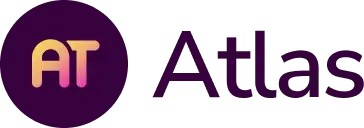By Wagner Pierre Dalian American International School
From many years as a teacher, I found cooperative learning and collaboration to be the best teaching and learning strategies, because it combines the intellectual and socio-emotional benefits as students work together towards a common agenda and learn how to work with other people. The same is true for teachers. I believe it is awesome when classroom teachers are teaching each other (peer coaching) about how to integrate technology, since they can share practical techniques that work with the student populations of their school.
Not only does the teacher who is asking or accepting help benefit, but the teachers who are giving help also feel good that they are sharing something of value to their colleagues. It creates a more “communal” school culture as teachers feel they are contributing to the larger community and connecting to others in a meaningful way.
Since each closed-door classroom can be like its own island, the teaching profession can be an excruciatingly isolating peninsula, unless efforts are made to create a bridge to connect those open islands to the mainland. The pillars of those bridges are based on cooperative learning and collaboration to create a safe, respectful, and supportive learning environment for both, students and teachers.
“I’m not tech-savvy” is the usual response I hear from some of my ‘tech-anxious’ colleagues when I try to help them with an educational digital learning resource. These teachers have laptops, smartphones, and use social media sites (such as Facebook, Twitter, and Instagram), so I reassure them that the tech resources work almost the same way as their phones and the social media sites they regularly use.
As the popular proverb goes: A journey of a thousand miles begins with a single step. I find people usually become comfortable with the new technology, once they open their minds to give it a try.

It's also similar to eating in a hot pot restaurant. Because you have so many options of various foods available (and it’s all-inclusive), it’s much easier to try out new foods. The same is true with tech resources. There is so much out there, so teachers usually just need a testimonial, a short description, or a tutorial video to have a basic understanding of a particular tool. This can encourage them to give any tech tool a “taste” and see if they can efficiently and effectively use it in their classrooms.
Parents face a similar challenge when they try to get their kids to try new foods, specifically healthy foods. There are strategies to get fussy eaters to experiment with new foods and some of those same techniques can be used to help teachers try out a new tech without feeling uncomfortable and increase the likelihood that those teachers will integrate technology into their curriculum on a regular basis.
The first step is to start small and show teachers a few features of the tech tool you are helping them with. Basically, slow and steady wins the race in getting teachers to learn as much as possible about a digital learning resource to later integrate into their teaching repertoire. The second step is to give them some time to engage and experiment with the tool, so they feel comfortable to go on their own and discover new ways to use the tool.Of course, you must have an open-door policy to encourage a regular conversation as well as allowing them to come back with questions or advice on how to effectively and efficiently use the tool. The last step is to share this culture and get as many people on board with the new resource, so they can exchange ideas on best practices in using the technology the best way possible.
When it comes to digital learning, together truly is better! A philosophy I attribute to my Haitian ancestry and its motto Unity is Strength!
![]()
While I'm not a computer expert, I am knowledgeable and comfortable with using tech tools to engage my students in learning and teaching. When teachers help other teachers, we broaden that community, thereby increasing best practices by making digital technology widely-available and practical for teachers, students, and parents. And in this way, we expose teachers to a number of digital technologies and inspire them to incorporate new technology in their classroom practices.
[box] FariaPD supports teachers and leaders around the world with hands-on, active and creative professional development experiences. Join one of our online or in-person professional development events, each designed to support the unique goals of your school or district. FariaPD is part of Faria Education Group, an international education company that provides services and systems for schools around the world including ManageBac, a curriculum-first learning platform, OpenApply, an online admissions service, and Atlas, a tailored curriculum management solution for schools. [/box]
Contributing Author:

